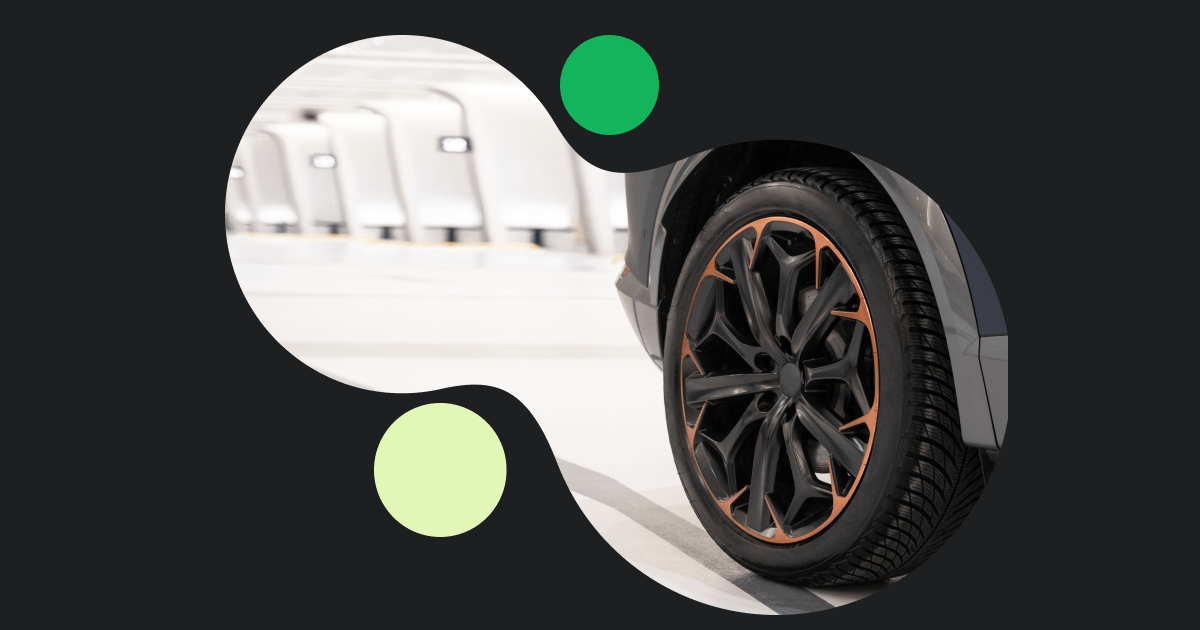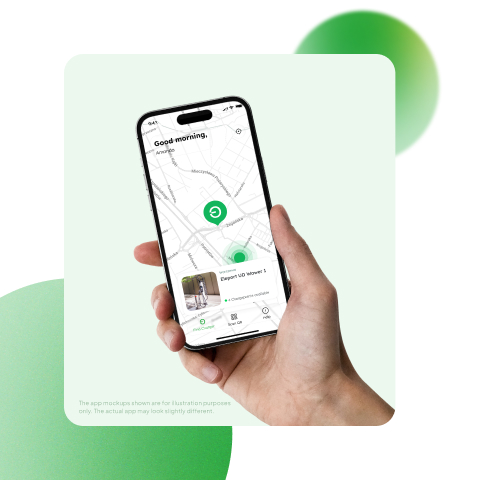Electric cars are now part of everyday life across Europe. So are the charging stations that keep them going – the charging infrastructure is already seamlessly put in place all around our cities and roadways. As public infrastructure expands, so does the need to know exactly how to use EV charging stations.
If you’re already driving electric, you’ve likely already tried charging both in public stations and at home. Either way, learning the basics and a few tricks can save time, avoid fees, and make your trips much smoother.
This EV charging guide covers the essentials: how to find a compatible station, start a session, monitor progress, and finish up. Most networks, like Eleport, follow similar steps, even if their apps or hardware look slightly different.
How to Charge an Electric Car Without the Stress
If this is your first EV, public charging might feel unfamiliar. But the process is more straightforward than it seems. Whether you’re plugging in after work or powering up for a road trip, knowing the basics will help you charge with confidence.
Here are simple EV charging station guidelines to get you started:
Step 1. Finding the Right Charger
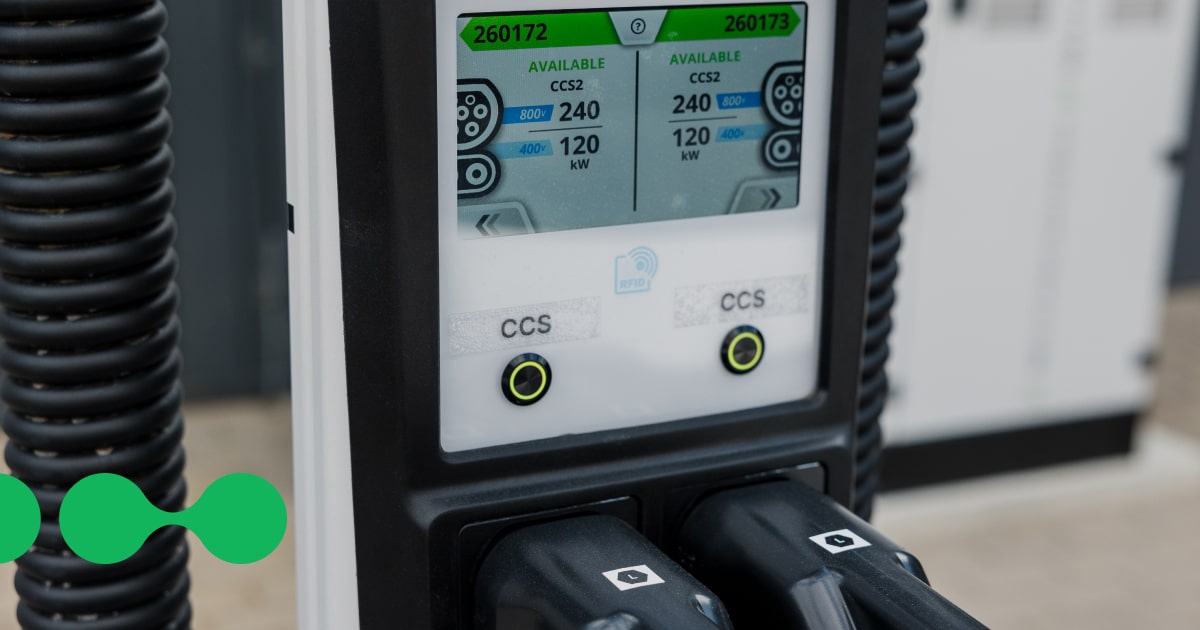
Let’s start with the obvious: not every charging station will work for your vehicle. Whether you can use it for your needs or not depends on the plug type, the charging speed, and whether or not the station is in use. You’ve got a few options when it comes to finding one that works:
- Your car’s onboard system probably shows nearby stations and whether they’re free or occupied. Most modern EVs have this.
- You could find the best route or station with one of the EV route planning tools.
- The third-party apps like ChargeMap or PlugShare are solid alternatives. They let you sort by a connector, speed, and even pricing.
- If you’re using a single provider, like Eleport, their charging app will give you real-time availability and directions. It’s fast, clean, and works across several countries in Europe.
- Make sure to filter the station search down to the plug type you’re looking for. This is most likely a CCS station for any modern EVs in Europe, a Type 2 plug if you’re looking to use AC for a longer charge stay, or CHAdeMO if you are driving a Nissan LEAF or one of the few others using the standard. CCS has the most availability across Europe.
*Planning ahead with a reliable tool, like the Eleport app, makes a big difference. It supports charger search, real-time availability, and direct route planning across several Northern and Eastern European countries. Download the Eleport app.
Step 2. Authorise the Charging Session

Once you arrive at the station, you must initiate the session before power is delivered to your EV. Most public chargers offer one or more of the following access methods.
Keep in mind that with most stations, you are required to plug in the cable to your car first, but a few also operate in the opposite order. The car must also be switched off when starting the charge, but can be switched back on after the charging has started, so that you can access the climate controls and infotainment system.
- Mobile app: Scan a QR code or select the station from your provider’s app, then tap “Start charging.” Some stations require an additional “Start” button push on the charger itself.
- RFID card: To begin, tap a pre-registered card against the reader on the charger. This method is popular among daily commuters.
- One-time payment: Some networks offer ad hoc payments via a web portal where you enter the charger ID and credit card details. No account is required.
- Plug&Charge or Autocharge: An increasing amount of charging networks and EVs support the Plug & Charge system, where all you need to do for charging is to connect your EV to the charger – the rest is all done via communication between the charger and the car’s own system, if you have a card on file to be charged. It is the most seamless option and requires no additional taps anywhere.
Choose the method based on what your charging network supports. If you regularly use a local network, it may be worth registering for easier access and automatic discounts.
*At Eleport, for example, users can start sessions via an app, RFID card, or one-time payment portal without needing an account. Drivers in Poland can use the Eleport Polska app for local service.
Step 3. Connect the Cable and Begin Charging
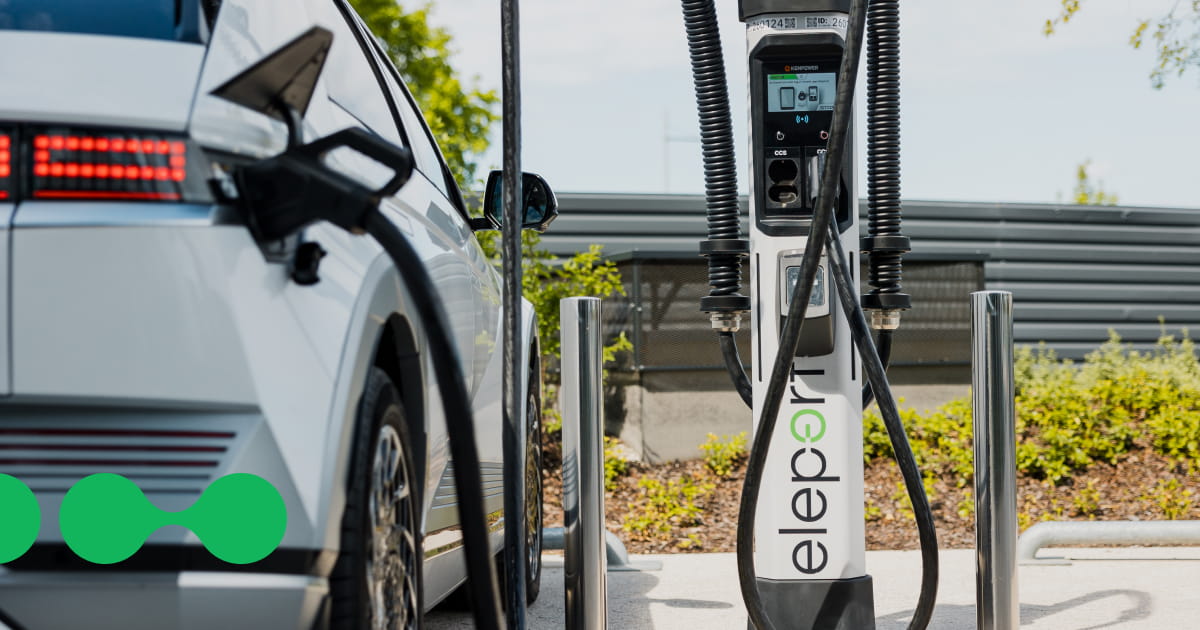
After successful authorisation, plug the charger into your vehicle – in case it wasn’t connected already. The process of starting the charge itself usually takes just a few seconds, and the charger or app will confirm when power delivery begins, along with visual or audio notifications on your EV.
In most cases:
- For AC charging (Type 2, up to 22 kW depending on the car), the charging cable may or may not be permanently attached to the station. If it isn’t, please check your car’s trunk to see if the necessary cable was provided with your vehicle.
- For DC fast charging (CCS or CHAdeMO standard, delivers 50kW to 350kW or more depending on the car and charger), the station provides a heavy-duty cable designed for high-speed transfer, without exception.
*If charging does not begin, check for any screen messages or error codes and refer to the station’s instructions on the screen. A faulty cable or a failed authorisation can often be resolved by restarting the session. Nearly all charging networks also have a helpline to call if you are stuck at any step.
Step 4. Keep Track and Finish Your Charge
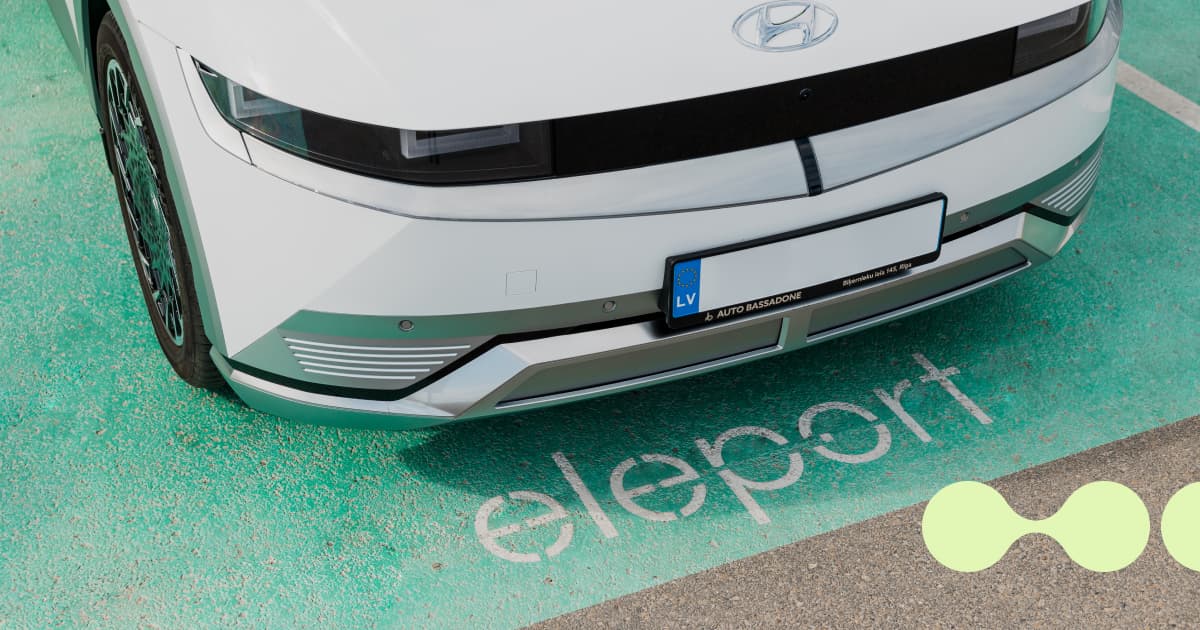
Once the charging begins, you can monitor everything from your app, the charger display, or on your car screens. Most systems show how much energy is being delivered, the current charging speed, the estimated time remaining, and the cost. Some stations even display the full charging curve for some additional details.
When you’re done:
- Stop the session via the app, RFID card, or the button on the charger.
- Unplug the cable and return it neatly.
Some stations automatically stop when your battery pack reaches the preset limit, but it’s best to check and confirm before leaving. This not only helps with your own charging habits, but it’s also part of basic EV charging guidelines that help keep the system running smoothly for everyone.
A part of the established EV charging etiquette says that you should not leave your EV at the station after it is done charging – in some cases you can even get idle fees applied to your account for that – and often it also makes sense to remove your car from a fast charger after reaching ~80%, as the remaining 20% always takes longer to charge regardless of the EV type just due to how battery charging works.
Step 5: Charging Speeds & Pricing—Know What You’re Paying For
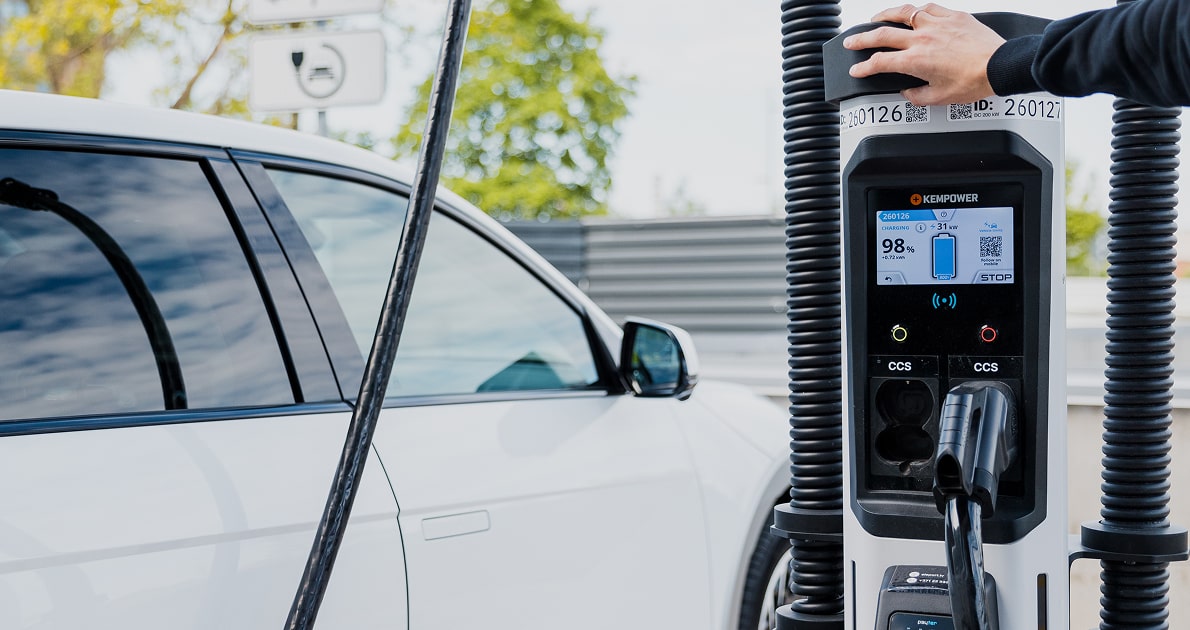
Not all EV chargers work the same way. Some are designed for long, overnight sessions, while others are built to deliver a fast top-up on the go.
AC chargers, also called semi-fast chargers, generally offer up to 22 kW and are ideal for a longer stop at work, home, or a hotel. The charging power you get, however, depends on the onboard charger capabilities of your EV, and in most cases is capped at 11 kW.
DC chargers, also called fast chargers, step things up with speeds starting at 50 kW, which is suitable for a quick break in the city. Then, high-power DC units can push 150 kW or more, in today’s most common ultra-fast charger case, even 350 kW, giving you a solid charge in minutes. These are great for highway trips or when time is tight.
Pricing models vary, too. You’ll pay per kilowatt-hour (kWh) charged in most European countries, reflecting actual energy usage. This is the most common method out there. But in some places, especially where faster chargers are installed, a part of the pricing is based on time, with surcharge fees applied after 30 minutes or an hour. With fast chargers, idle fees often apply if you leave your EV at the charger after the battery is full. A few charging operators might even apply a flat session fee, regardless of how much power you pull, although this is more the case with AC charging at places like hotels.
Good news: most apps, including Eleport Europe, clearly show current rates before you start charging, so there are no surprises.
Best Practices for Smarter EV Charging
Smart charging isn’t just about efficiency. It is also about protecting your battery and being considerate of other drivers.
So, how to use EV charging stations? Try not to charge your battery to 100% every time. Stopping at 80–90% is better for long-term battery health, especially if you commute. On the flip side, don’t let your charge drop too low too often—keeping it between 20% and 80% is generally considered the “sweet spot” for most electric cars. Do note that nothing bad happens if you charge it to 100% on a rare occasion for your needs, and drop to nearly 0% when squeezing to get to the next charger. Depending on the battery type, some EVs are actually recommended to charge to 100% more often.
“Even though it might look foreign if you are used to driving an ICE car, handling everything around charging your EV is actually rather easy. Large studies of EV owners before and after buying the electric car have shown that the fear of having issues with charging is larger before buying the car, and significantly reduced after being an owner for a while. And as charging stations get smarter and more reliable over time, there is even less to worry about these days.” – Jaan Juurikas
Move your vehicle once your charge is complete so others can use the station. Some providers charge idle fees if you linger too long. And yes, it should go without saying: don’t park in EV-only spots if you’re not charging.
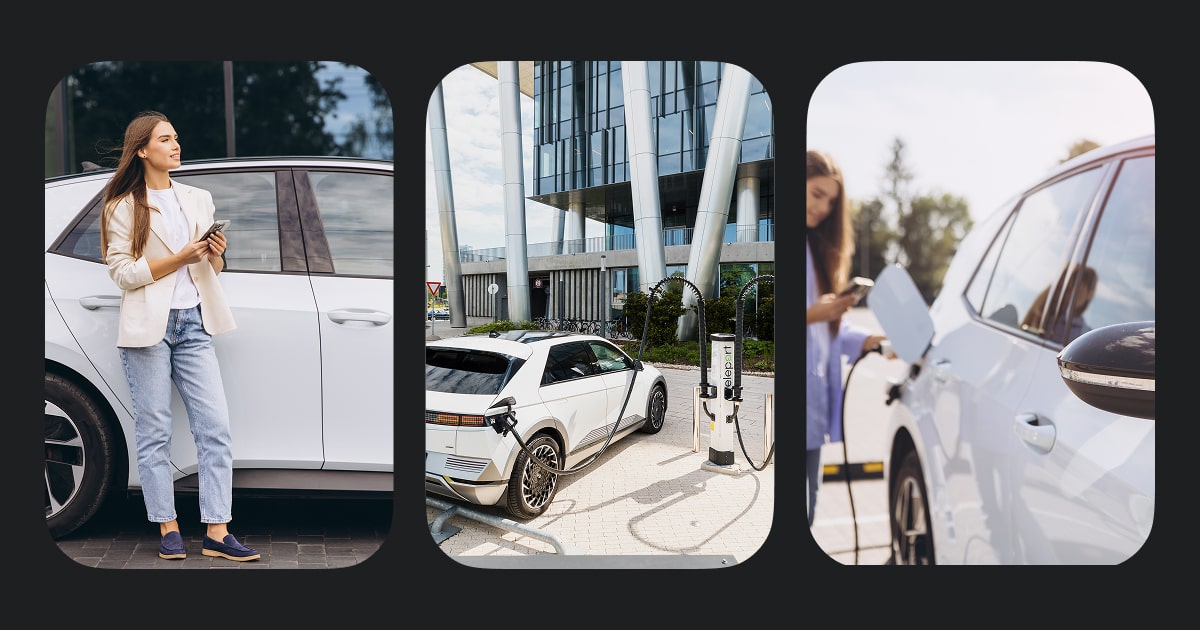
If it’s cold out, try preconditioning your battery before you arrive at the station. Some EVs even do this automatically when you select a charger in your navigation system, and some have an option to click within the infotainment system. It’ll make charging faster right when you arrive, and more efficient.
Finally, tidy up. Return cables properly, don’t leave them trailing across walkways, and treat public chargers like you would your own equipment. The charging cables are heavy-duty and can handle most of it, but you still wouldn’t want to use a dirty or broken one next time you charge for those edge cases when they have been mistreated.
Troubleshooting Tips When Charging
Even experienced EV drivers run into occasional hiccups when charging their electric cars. Here are some quick solutions based on common issues around not being able to charge:
- What to do if charging does not start? Double-check that the plug is securely in your charging port and that your car is in park and switched off. Also, look for debris or ice in the port, although the latter is rarely a problem.
- What to do if the payment failed? Restart the app, try another card, or switch to a contactless method.
- What to do if the charger is not responding? Unplug the cable, wait 10–15 seconds, and reconnect. Still nothing? Contact customer support—most apps (including Eleport) offer quick-access helplines to get you sorted.
These basic EV charging guidelines can save time and help avoid unnecessary detours.
Final Thoughts
Learning how to use EV charging stations doesn’t take long and can mostly be figured out on the go, but mastering it makes every trip more efficient, affordable, and less stressful. With the best charging app for Europe, like Eleport, you’ll find stations faster, easily track your sessions, and keep moving without delays in several European countries.
Whether commuting locally or exploring new roads, knowing the basics and following a few smart EV charging guidelines makes all the difference.

